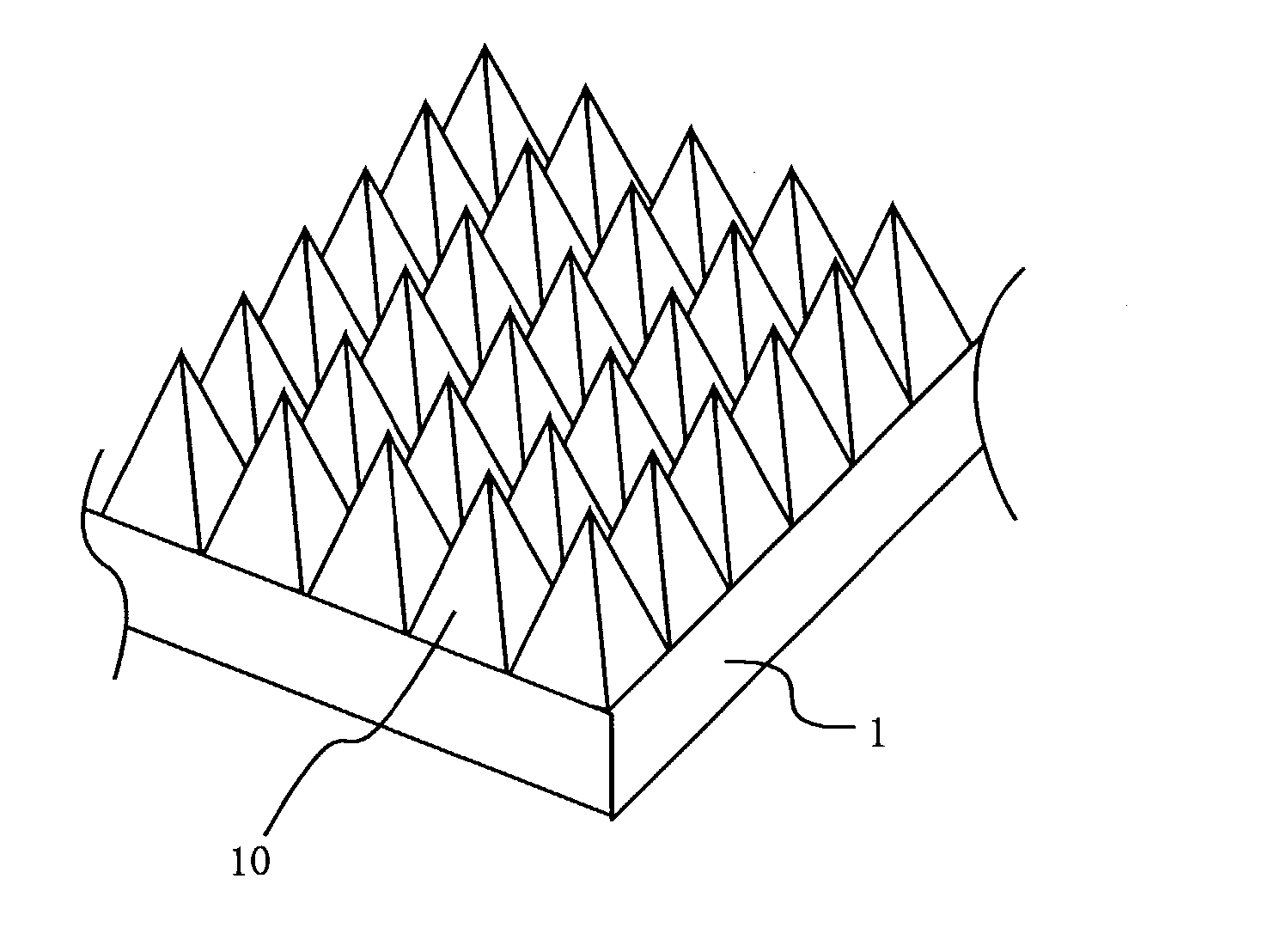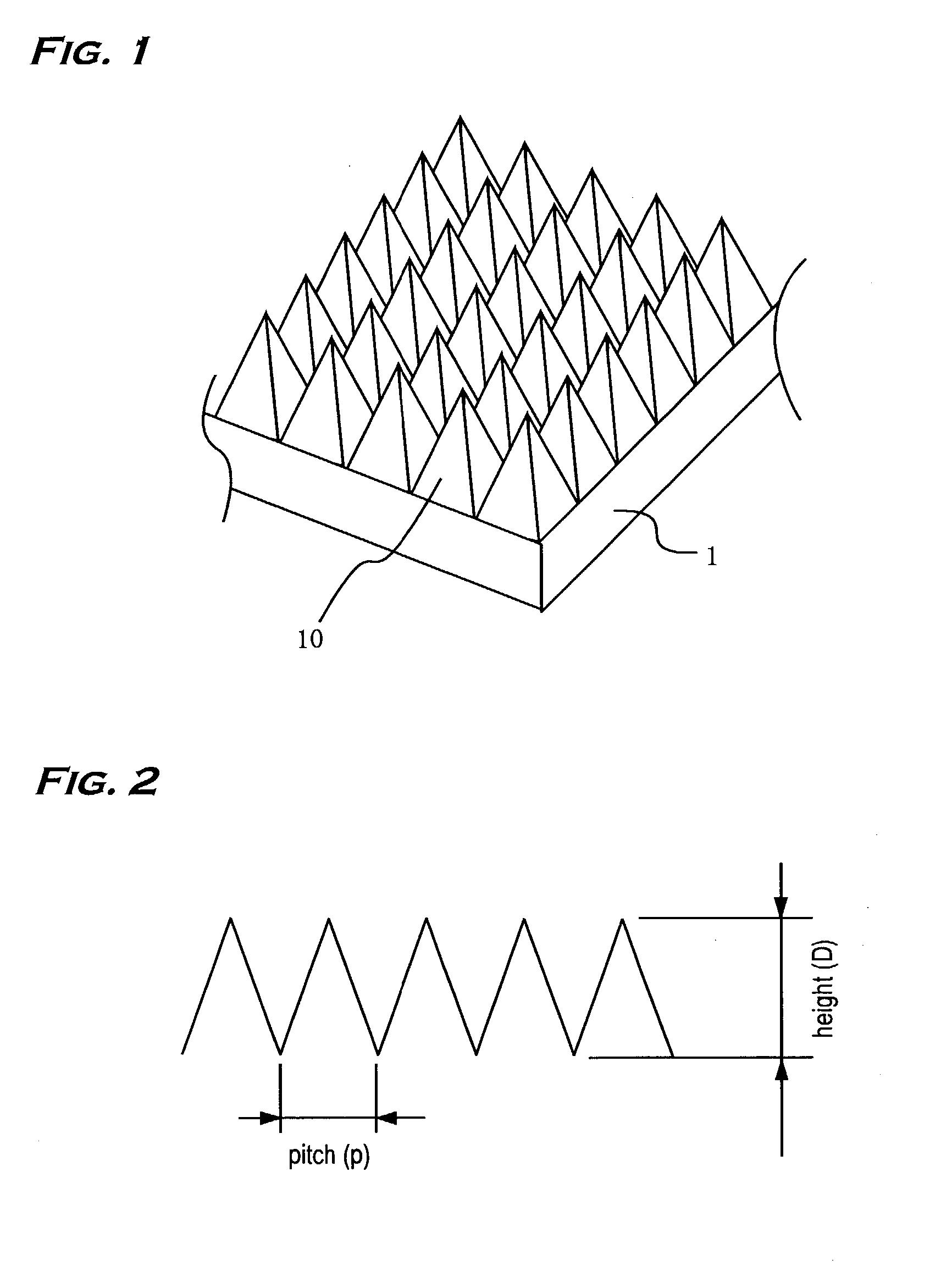Antireflective member and electronic equipment using same
a technology of anti-reflective elements and electronic equipment, applied in the field of anti-reflective elements, can solve the problems of reducing yield, increasing costs, and difficult to obtain the anti-reflective effect of light having a wavelength rang
- Summary
- Abstract
- Description
- Claims
- Application Information
AI Technical Summary
Benefits of technology
Problems solved by technology
Method used
Image
Examples
Embodiment Construction
[0046] Description of an embodiment according to the present invention is now made with reference to drawings. FIG. 1 is a perspective view showing a simplified shape of a surface of an antireflective member using this invention. FIG. 2 is a schematic view showing a cross-sectional shape of the pattern.
[0047] As shown in FIG. 1, a transparent substrate 1 comprises a roughened surface having a continuous pattern in which protrusions 10 in a fine pyramidal shape are continuously formed. Although the protrusion 10 takes the shape of pyramid in this embodiment, the present invention may employ protrusions in the shape of six-sided pyramid or in the shape of cone.
[0048] An aspect ratio is defined as a ratio D / p; a height D of the pattern to a pitch p of the pattern, shown in FIG. 2.
[0049] FIG. 4 shows a simulation result of spectral characteristics when changing the aspect ratio of the pyramid pattern. Eight kinds of pyramid pattern having the aspect ratio respectively of 0.6, 0.8, 0.9, ...
PUM
| Property | Measurement | Unit |
|---|---|---|
| reflectance | aaaaa | aaaaa |
| aspect ratio | aaaaa | aaaaa |
| wavelength | aaaaa | aaaaa |
Abstract
Description
Claims
Application Information
 Login to View More
Login to View More - R&D
- Intellectual Property
- Life Sciences
- Materials
- Tech Scout
- Unparalleled Data Quality
- Higher Quality Content
- 60% Fewer Hallucinations
Browse by: Latest US Patents, China's latest patents, Technical Efficacy Thesaurus, Application Domain, Technology Topic, Popular Technical Reports.
© 2025 PatSnap. All rights reserved.Legal|Privacy policy|Modern Slavery Act Transparency Statement|Sitemap|About US| Contact US: help@patsnap.com



